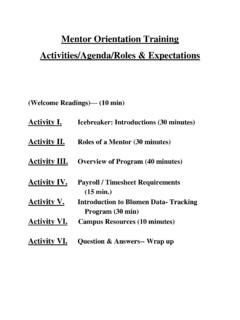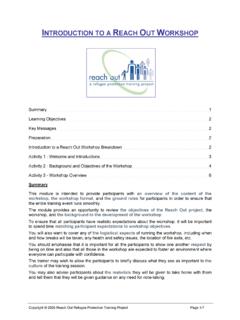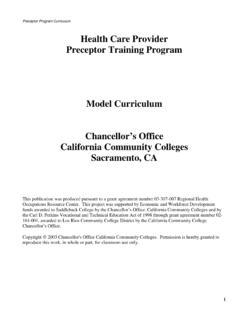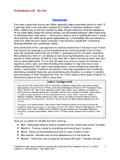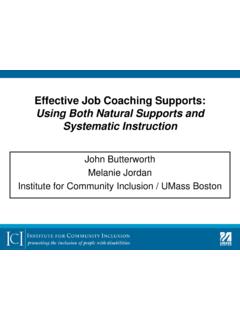Transcription of The Path to Customer Satisfaction and Loyalty …
1 STRATEGIES FOR GROWTH SM "CONSULTANTS TO THE SERVICES INDUSTRY" Box 1024 / Westtown, PA 19395 / (610) 399-9717 / (610) 399-9718 (Fax) / The path to Customer Satisfaction and Loyalty Improvement: Following a Process from Strategic Planning Through Measurement and Implementation - A Special Management Summary - Compliments of: Strategies For GrowthSM Westtown, Pennsylvania USA 2000 Strategies For GrowthSM Strategies For GrowthSM Page 2 of 15 The path Toward Customer Satisfaction and Loyalty Improvement 2000 Box 1024 / Westtown, PA 19395 / (610) 399-9717 / (610) 399-9718 (Fax) / Introduction Many businesses rely on their ability to keep customers satisfied and wanting to come back for more. This is true in all industries, but especially in the Customer service and support-oriented segments where the most successful organizations are those that are able to generate high levels of repeat business from their existing base of customers.
2 Learning where the business is, and is not, meeting customers' expectations through a targeted Customer Satisfaction measurement program can be extremely helpful in developing specific tactical actions for improving Customer service performance. These improvements can then lead to increased business development opportunities for the organization as well as provide valuable input directly into an actionable strategic marketing plan. Applications of Customer Satisfaction Research There are many reasons for why conducting a program to assess Customer needs, requirements, perceptions and Satisfaction would be beneficial. These may include: To establish a benchmark against which future shifts and changes in your organization's service performance can be measured and evaluated; To generate data that can be used as input into a strategic, marketing, quality or re-engineering planning process; To measure the impact of specific events such as advertising or promotional campaigns, new product/service introductions, company/product name changes, price changes, etc.
3 ; To evaluate and compare the performance of individual product/service lines, geographic regions, business divisions or salespersons; To serve as the basis for a sales incentive or employee compensation program; To provide the required information for ISO 9000, the Malcolm Baldrige Award or an individual State's annual quality award; and To provide management with the necessary information and tools to make decisions that will improve the organization's ability to translate high levels of Customer Satisfaction into long term Customer Loyalty . Checklist for Customer Satisfaction Program Design The checklist for developing an appropriate Customer Satisfaction program design essentially focuses on the answers to questions in twelve (12) key areas as listed below): Business Objectives, such as "Why is the research being conducted?
4 " and "How is it going to be used?"; Information Objectives, such as "What information do we need to meet our business objectives?" and "How can we most effectively obtain it?"; Organizational Structure, such as "What areas do we want to measure?" and "Which areas require separate analysis?"; Customers and Customer Groups, such as "Which customers should be surveyed?" and "Who within each Customer organization represents our most appropriate contact?"; Strategies For GrowthSM Page 3 of 15 The path Toward Customer Satisfaction and Loyalty Improvement 2000 Box 1024 / Westtown, PA 19395 / (610) 399-9717 / (610) 399-9718 (Fax) / Competitive Environment, such as "Who are our direct and indirect competitors?" and "Who should we benchmark against?"; Operational Information, such as "How do we obtain current lists of customers?" and "How can they best be reached?
5 "; Statistical Requirements, such as "What is an acceptable margin of error?" and "How can the data most effectively be reported?"; Previously Conducted Research, such as "What have we learned from our past studies?" and "How can we integrate what we've learned into the new process?"; Internal Measures, such as "What mechanisms currently exist to track performance?" and "What standards for performance are already in place?"; Quality Management, such as "How will this effort support our overall quality initiatives?" and "How can the results best be communicated?"; Tracking and Monitoring, such as "How should we track our Customer Satisfaction performance over time?" and "How frequently will we need to update our information base?"; and Timing and Scheduling, such as "When will the baseline results be required?" and "How quickly can Customer lists be made available?
6 ". The Process of Customer Satisfaction and Loyalty Research The primary goal of conducting Customer Satisfaction and Loyalty measurement research is to benefit from the use of focused, customized and personalized research tools that meet the organization s specific information needs and requirements in a comprehensive, concise, statistically valid, timely and actionable manner. The research should be: Focused, in terms of being defined, targeted and directed to the specific areas of study that will be most insightful, instructive and actionable to the organization; Customized, in terms of dealing specifically in the areas that are likely to have the greatest application to the organization s overall corporate mission and way of doing business; and Personalized, in terms of the ability to generate a strategic plan of action for the organization that each of its individual managers can easily relate to, accept, and incorporate into their own respective ways of doing business.
7 A basic understanding of both the practical and realistic applications of market research in general, and Customer Satisfaction and Loyalty research, in particular, are generally required in order to ensure that an appropriate, and effective, research methodology is ultimately adopted. A thorough understanding of the processes themselves would be most helpful in ensuring that a sound, focused and targeted program is ultimately developed and implemented. Why Is Customer Satisfaction and Loyalty Research So Important? Perhaps the most obvious reason why Customer Satisfaction and Loyalty research is so important in the overall process is that it provides the customers with a means to communicate directly to company management with respect to their individual needs and concerns and this, in turn, assures the organization that the quality standards it has established truly reflect the voice of the Customer and not just the company line.
8 Strategies For GrowthSM Page 4 of 15 The path Toward Customer Satisfaction and Loyalty Improvement 2000 Box 1024 / Westtown, PA 19395 / (610) 399-9717 / (610) 399-9718 (Fax) / In addition, the research can provide information about the organization s perceived strengths and weaknesses in the marketplace with a high level of empirical certainty that can ultimately help it to allocate its resources more effectively to optimize Customer Satisfaction . Further, a commitment of resources to research also demonstrates to employees that management is serious about improving quality. This invariably leads to increased internal attention on Customer Satisfaction and Loyalty as an important goal. Finally, investing in a Customer Satisfaction and Loyalty research program lets customers know that the organization is proactively concerned about satisfying their needs and expectations, and is genuinely committed to improving the delivery of its products, services and support.
9 What Elements Are Most Important in Supporting the Process? We believe the only way to gain Customer Loyalty is through a comprehensive and continuous effort to satisfy customers' needs and expectations. Cursory or sporadic attempts to gain Customer Loyalty provide only limited value as customers can quickly recognize half-hearted attempts to meet their needs. In addition, even as improvement occurs, Customer needs may continue to change, and/or new needs and expectations may begin to surface. Ultimately, customers may become even more demanding and, as a result, may actually expect more from their supplier. There are no standardized techniques or black boxes that can serve to meet all of an organization s Customer Satisfaction and Loyalty improvement objectives. Therefore, the recommended approach is generally one that is customized to meet the organization s specific needs.
10 Each organization s Customer base has its own set of distinct needs and expectations and, consequently, the approach to measuring, understanding, and reacting to these needs has to be distinct as well. What Does/Should the Research Provide? In building a Customer Satisfaction and Loyalty improvement program, the research process allows management to hear the voice of the Customer in terms of: Clarifying and defining specific Customer needs and expectations, Identifying key drivers of Satisfaction , Benchmarking performance against both Customer needs and competitive performance, Determining organization strengths and weaknesses vis a vis the competition, Gaining additional insight into the sources of Customer dissatisfaction and identifying specific areas requiring improvement, Providing the basis for a system that can inform management of problems or situations requiring immediate attention, and Identifying priorities and setting targets for quality improvement.
